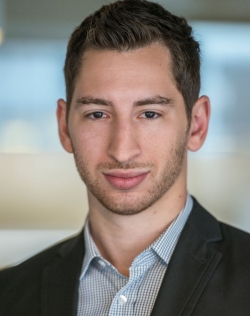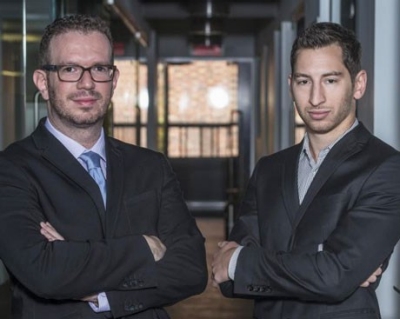Imagine, for example, a fitness tracker app that uses motion capture technology to analyze full body movement when exercising. Or a high-tech baby monitor that lets working parents see and speak to their children through their smartphones on the go.
Hasenfratz and his team — comprised of about a dozen or so developers, designers and quality assurance testers — built both.
Recently acquired by Logient, a Montreal-based company specializing in custom software, Mobilogie is a start-up success story with Concordia roots. Its president and founder, Antoine Azar, BA 82, is a Concordia graduate himself.
After earning his Bachelor of Engineering at Concordia in 2011, Hasenfratz joined Mobilogie.
Four years later, he now serves as the company’s chief technology officer.
What drew you to app development?
Michael Hasenfratz: I always had a very strong interest in technology and gadgets. When I was at Concordia, the iPhone had just come out and I decided I learn how to program and start making some apps.
The first was a fantasy sports stats tracker — I sent an anonymous tip to Gizmodo and they actually featured the app on their website!
That hands-on experience led me to a good internship at Blackberry through the Co-op Program at Concordia. I spent four months in Waterloo learning from some of the best developers around. By the time I graduated, I knew I wanted to work in software.
Why did you choose to begin your career at a start-up, rather than a larger company?
MH: Through the Co-op program, I had the experience of working at both a big company and a small company. At the time when I was there as a Co-op student, Blackberry was a 20,000 person company and almost 80% of those people were working at their headquarters in Waterloo. As part of my Co-op, I also had the experience of working for a much smaller company with a staff of about 150.
I quickly learned that if I wanted to improve fast, I would have to start at a small company. Working at Blackberry showed me firsthand how these larger companies tend to put you in boxes, giving you very specific set tasks and not letting you do much else. Large companies need to employ that kind of structure and organization of course, or else they’d be a huge mess — but that style wasn’t for me.
How did you get started at Mobilogie?


 Michael Hasenfratz, BEng 11, is chief technology officer at Mobilogie. | All photos courtesy of Logient
Michael Hasenfratz, BEng 11, is chief technology officer at Mobilogie. | All photos courtesy of Logient
 Mobilogie president and founder Antoine Azar, BA 82, and Michael Hasenfratz, BEng 11, chief technology officer | Photo courtesy of Logient
Mobilogie president and founder Antoine Azar, BA 82, and Michael Hasenfratz, BEng 11, chief technology officer | Photo courtesy of Logient